Themed collection CrystEngComm New Talent

New Talent 2018
Welcome to this themed issue of CrystEngComm entitled New Talent 2018.

CrystEngComm, 2018,20, 5870-5871
https://doi.org/10.1039/C8CE90135J
High pressure: a complementary tool for probing solid-state processes
High pressure offers insight into the mechanisms of a wide range of solid-state phenomena occurring under atmospheric pressure conditions.

CrystEngComm, 2019,21, 10-22
https://doi.org/10.1039/C8CE01391H
Green applications of metal–organic frameworks
MOFs as green materials – a highlight of the environmentally conscious or “green” applications of MOFs.
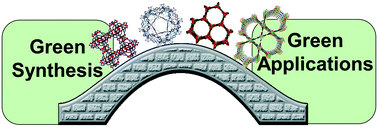
CrystEngComm, 2018,20, 5899-5912
https://doi.org/10.1039/C8CE01002A
Hydrogen-bonded organic frameworks: design, structures and potential applications
This paper highlights the current key progress on HOF-based materials, including their design, structural characteristics, and applications.
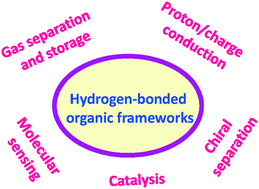
CrystEngComm, 2018,20, 5884-5898
https://doi.org/10.1039/C8CE00655E
Exploiting rotational motion in molecular crystals
Rotational motion within molecular crystals is a prototypical concept to build future functional materials and solid-state molecular machines.

CrystEngComm, 2018,20, 5872-5883
https://doi.org/10.1039/C8CE00420J
Pressure-induced structural phase transition in Li4Ge
The structural, dynamic, elastic, and electronic properties of Li4Ge were investigated by means of evolutionary crystal structure prediction in conjunction with first-principles calculations.
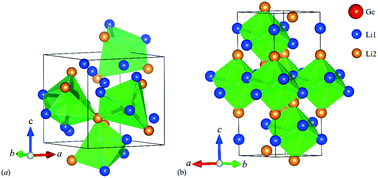
CrystEngComm, 2018,20, 5949-5954
https://doi.org/10.1039/C8CE00783G
Solid-state characterization and solubility enhancement of apremilast drug–drug cocrystals
Three isostructural cocrystals of apremilast with nicotinamide, caffeine, and acetylsalicylic acid were successfully designed and synthesized on the basis of its solvated structures.
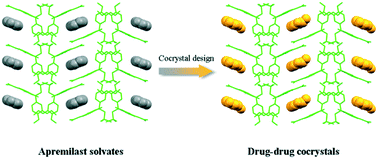
CrystEngComm, 2018,20, 5945-5948
https://doi.org/10.1039/C8CE00689J
Hygroscopicity of lithium coordination polymers and their solid solutions
Lithium-based coordination polymers and their solid solutions are synthesised and investigated from a pharmaceutical perspective. In particular, the hygroscopicity is measured as a function of composition showing two different behaviours.
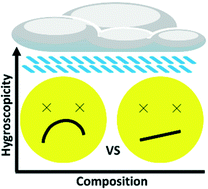
CrystEngComm, 2018,20, 5940-5944
https://doi.org/10.1039/C8CE00905H
Biocompatible MOFs with high absolute quantum yield for bioimaging in the second near infrared window
Biocompatible mixed metal YbNd metal–organic frameworks are demonstrated to be highly efficient emitters in the second NIR window.

CrystEngComm, 2018,20, 5919-5924
https://doi.org/10.1039/C8CE00909K
A H-shaped heterometallic Sn4Au4 system with guest-tuneable multicolour and selective luminescence sensing properties
A H-shaped heterometallic Sn4Au4 system displays guest-dependent optical properties and its stimuli-responsive methylred-rich crystals are sensitive towards pH variations.
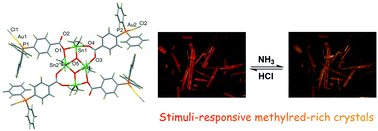
CrystEngComm, 2018,20, 5935-5939
https://doi.org/10.1039/C8CE00652K
Chemically controlled crystal growth of (CH3NH3)2AgInBr6
We report the successful crystal growth of a previously unknown mixed-metal organic compound (CH3NH3)2AgInBr6.
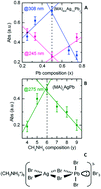
CrystEngComm, 2018,20, 5929-5934
https://doi.org/10.1039/C8CE00702K
Revisiting the structural homogeneity of NU-1000, a Zr-based metal–organic framework
Synthesis and activation of phase-pure and defect-free metal–organic frameworks (MOFs) are essential for establishing accurate structure–property relationships.
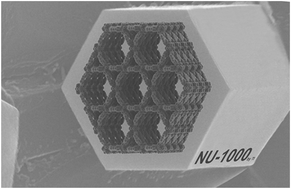
CrystEngComm, 2018,20, 5913-5918
https://doi.org/10.1039/C8CE00455B
Synthesis of homochiral zeolitic imidazolate frameworks via solvent-assisted linker exchange for enantioselective sensing and separation
Two homochiral zeolitic imidazolate frameworks (S- and R-ZIF-78h) of GME topology are synthesized via solvent-assisted linker exchange (SALE) of ZIF-78, which exhibit permanent porosity and enantioselective sensing and separation of proline.
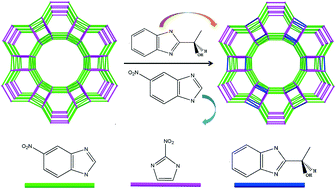
CrystEngComm, 2018,20, 5925-5928
https://doi.org/10.1039/C8CE00403J
Microporous mixed-metal mixed-ligand metal organic framework for selective CO2 capture
Layered-pillared framework of the CO2-loaded MOF developed using this mixed-metal mixed-ligand approach showing the multiple-adsorption sites within the MOF.
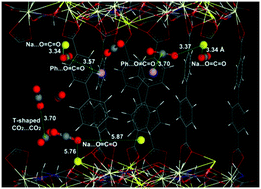
CrystEngComm, 2018,20, 6088-6093
https://doi.org/10.1039/C8CE00752G
Investigating the crystal engineering of the pillared paddlewheel metal–organic framework Zn2(NH2BDC)2DABCO
We examined the characterization data for Zn2(NH2BDC)2DABCO to gain mechanistic insight into the crystal engineering of pillared paddlewheel MOFs.
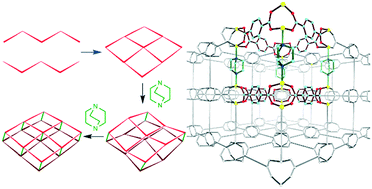
CrystEngComm, 2018,20, 6082-6087
https://doi.org/10.1039/C8CE00848E
A stable polyoxometalate-based porous coordination polymer with high proton conductivity
A new porous coordination polymer (1) has been prepared by a hydrothermal method. The supramolecular framework of 1 is stable in aqueous solutions with pH ranging from 1 to 13 and boiling solvents, such as water, methanol and ethanol. The proton conductive properties of 1 are also studied.
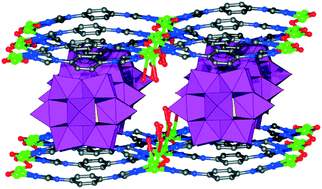
CrystEngComm, 2018,20, 6077-6081
https://doi.org/10.1039/C8CE00693H
The thermo-responsive behavior in molecular crystals of naphthalene diimides and their 3D printed thermochromic composites
Alteration of the number of carbon atoms on the alkoxyphenyl substituent in naphthalene diimides results in tunable thermo-salient behavior.
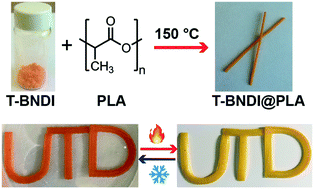
CrystEngComm, 2018,20, 6054-6060
https://doi.org/10.1039/C8CE00798E
Two metal–organic frameworks based on pyridyl–tricarboxylate ligands as size-selective catalysts for solvent-free cyanosilylation reaction
Two novel 3D metal–organic frameworks based on multifunctional pyridyl–tricarboxylate ligands as size-selective heterogeneous catalysts for the cyanosilylation of acetaldehydes.
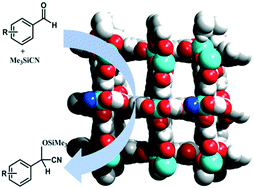
CrystEngComm, 2018,20, 6070-6076
https://doi.org/10.1039/C8CE00694F
In situ control of photochromic behavior through dual photo-isomerization using cobaloxime complexes with a spiropyran derivative and 2-cyanoethyl ligands
The lifetime of colored species of spiropyran derivatives increased significantly after the 2-cyanoethyl group was photoisomerized to the 1-cyanoethyl group on exposure to visible light.

CrystEngComm, 2018,20, 6061-6069
https://doi.org/10.1039/C8CE00982A
High contrast mechanochromic and thermochromic luminescence switching by a deep red emitting organic crystal
In this study, we report a deep red emissive organic crystal that displays high contrast fluorescence switching under mechanical and thermal stimulation.
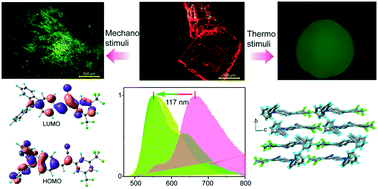
CrystEngComm, 2018,20, 6046-6053
https://doi.org/10.1039/C8CE00696B
A two-fold interpenetrated zinc–organic framework: luminescence detection of CrO42−/Cr2O72− and chemical conversion of CO2
A novel two-fold interpenetrated 3D framework can adsorb CO2 and serve as an efficient and recyclable catalyst for the conversion of CO2 with epoxides. Furthermore, it can also act as a sensitive and recyclable luminescent probe to detect CrO42−/Cr2O72− among many anions in aqueous solution.
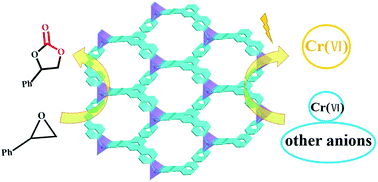
CrystEngComm, 2018,20, 6040-6045
https://doi.org/10.1039/C8CE00673C
From serendipity to supramolecular design: assessing the utility of computed crystal form landscapes in inferring the risks of crystal hydration in carboxylic acids
Calculated structural descriptors for predicted anhydrate polymorphs are used to assess the risks of crystal hydration in carboxylic acids.
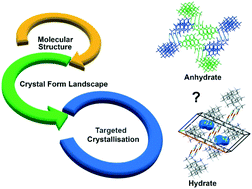
CrystEngComm, 2018,20, 6026-6039
https://doi.org/10.1039/C8CE00758F
Two interpenetrated metal–organic frameworks with a slim ethynyl-based ligand: designed for selective gas adsorption and structural tuning
Structural tuning and selective gas adsorption of two interpenetrated metal–organic frameworks using a slim ethynyl-based ligand were achieved.
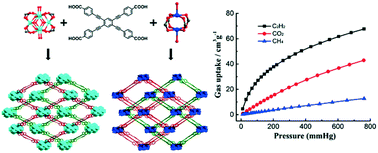
CrystEngComm, 2018,20, 6018-6025
https://doi.org/10.1039/C8CE00779A
Understanding solid-state photoswitching in [Re(OMe2-bpy)(CO)3(η1-NO2)] crystals via in situ photocrystallography
Single-crystal-to-single-crystal linkage isomerism is determined in a photoswitchable Re(I)-bpy crystal, shedding new light on the photoactive properties of potential Re(I)-photocatalysts.
![Graphical abstract: Understanding solid-state photoswitching in [Re(OMe2-bpy)(CO)3(η1-NO2)] crystals via in situ photocrystallography](/en/Image/Get?imageInfo.ImageType=GA&imageInfo.ImageIdentifier.ManuscriptID=C8CE00774H&imageInfo.ImageIdentifier.Year=2018)
CrystEngComm, 2018,20, 5990-5997
https://doi.org/10.1039/C8CE00774H
On the significance of weak hydrogen bonds in crystal packing: a large databank comparison of polymorphic structures
Weak hydrogen bonds control initial molecular recognition modes, but the structure is determined by the interactions among larger supramolecular assemblies.
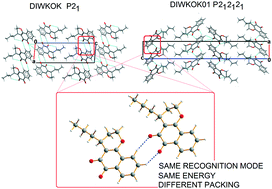
CrystEngComm, 2018,20, 5976-5989
https://doi.org/10.1039/C8CE00674A
Spatially-ordered nano-sized crystallites formed by dehydration-induced single crystal cracking of CuCl2·2(H2O)
The dehydration of CuCl2·2(H2O) crystals is studied as an example of a fracture-assisted chemical reaction. The structure of the combined reaction–fracture front undergoes a spontaneous morphology transition, leading to spatial ordering and 8-fold acceleration of the reaction.
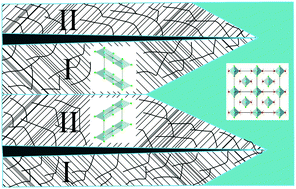
CrystEngComm, 2018,20, 6005-6017
https://doi.org/10.1039/C8CE00683K
cis-Cyclodiphosph(V/V)azanes as highly stable and robust main group supramolecular building blocks
Bench-top stable cis-cyclodiphosph(V/V)azanes are demonstrated to form robust R21(8) bifurcated hydrogen-bonds and P![[double bond, length as m-dash]](https://www.rsc.org/images/entities/char_e001.gif) Se⋯Br halogen bonds. This work highlights the potential of cyclodiphosph(V/V)azane building blocks in creating new supramolecular assemblies.
Se⋯Br halogen bonds. This work highlights the potential of cyclodiphosph(V/V)azane building blocks in creating new supramolecular assemblies.
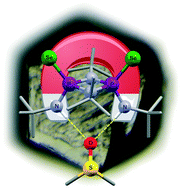
CrystEngComm, 2018,20, 5998-6004
https://doi.org/10.1039/C8CE00395E
Simple design for metal-based halogen-bonded cocrystals utilizing the M–Cl⋯I motif
The halogen bonding proclivity of the chlorine atom coordinated to the Co(II) metal centre has been explored by synthesis and crystal structure analysis of a family of 12 novel metal-based halogen-bonded cocrystals with iodine-based donors.
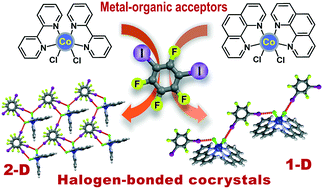
CrystEngComm, 2018,20, 5955-5963
https://doi.org/10.1039/C8CE00754C
Direct synthesis of an aliphatic amine functionalized metal–organic framework for efficient CO2 removal and CH4 purification
An aliphatic amine functionalized MOF was directly synthesized for CO2 adsorption and CH4 purification.
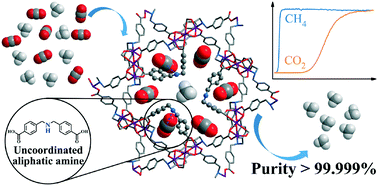
CrystEngComm, 2018,20, 5969-5975
https://doi.org/10.1039/C8CE00574E
Structures and photophysical performances of (fluoro)salicylate stabilized polyoxo-titanium clusters
The introduction of fluorine in salicylic acid yielded different polyoxo-titanium clusters with distinct photophysical properties.
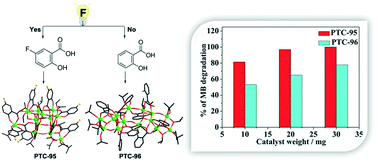
CrystEngComm, 2018,20, 5964-5968
https://doi.org/10.1039/C8CE00150B
About this collection
This issue aims to celebrate the emerging talent in the field of crystal engineering and crystal growth and is guest-edited by Professor Pance Naumov (New York University Abu Dhabi), Dr Timur Islamoglu (Northwestern University), Professor Tongbu Lu (Tianjin University of Technology), and Professor Omar Farha (Northwestern University).